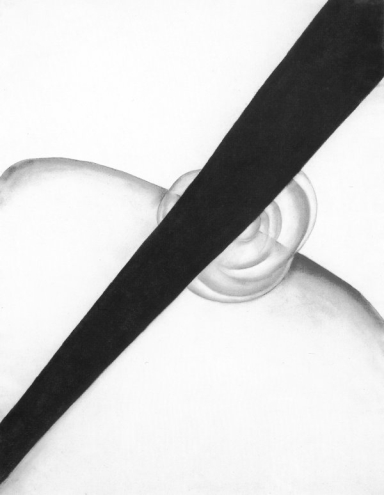It was in the first decades of the 20
th century art began to be taught from
the point of view of the mental images of perception. That is to say,
reality creates a state of mind that becomes a painting when the person
communicates the idea by arranging the right things in the right place
within two-dimensions. It is well documented how this teaching
liberated the mind of one student of the time, Georgia O’Keeffe, from the
tyranny of having to produce representations of landscapes that did not
encapsulate her mental perception of them. She says it released her
dissatisfied intellect into the realm of non-representational art to paint
‘something I know’. She invented a personal visual vocabulary, which
quickly placed her at the forefront of American modernism.
O’Keeffe and her modernist contemporaries were essentially
investigating patterns in nature to discover how drawing could be used
to communicate self. She was encapsulating in shapes and colours a
rich array of human emotions and mental associations suggested by
material objects. Eigen and other neural scientists of the 1970s were
trying to discover how scientific ideas about an ‘unseeable’ network of
proteins could be communicated as drawings. Inevitably, science has to
use ‘artistic methods’ to depict the patterns it discovers. Graphicity
actually evolved for this very purpose of comprehending how we can
control our social evolution. The depiction of supercycles is obviously
useful knowledge. Scientific diagrams are part of a universal language,
underpinned by a precise terminology and an agreed set of
international symbols, although the scientists who are at the cutting
edge of neural networks are a relatively small subculture of
understanding. This may be contrasted with the subculture grouped
around the makers and critics of non- representational works of art. For
example, Georgia O’Keeffe’s picture ‘Black Diagonal’ (Fig 1.6), one of
a series of abstract charcoals, utilises her own personal non-verbal
language of symbols to represent a particular state of mind. In this
sense it is not a visual aid for viewers to understand her mental
discovery. She put it this way:
“There are people who have made me see shapes…I have
painted portraits that to me are almost photographic. I
remember hesitating to show the paintings, they looked so real
to me. But they have passed into the world as abstractions-no
one seeing what they are”.
Whether it is representational or abstract, each observer is left to
translate a picture according to his or her own mindset, whether it is
representational or abstract. The first person to comment on O’
Keeffe’s abstract charcoal drawings, William Murrell Fisher, was struck
by their transcendence and found evidence in them of:-
“consciousness… that one’s self is other than oneself, is something
larger, something almost tangibly universal, since it is en rapport with
a wholeness in which one’s separateness is, for the time, lost”. He
characterised the works as “mystical and musical”.
It is inevitable that this initial idiosyncratic response set the academic
traits in O’ Keeffe’s work that have been of continuing interest to
reviewers ever since.
This long-running dialogue is largely confined to a relatively small
community of museum curators and art commentators. It is also an
indication of the powerful role of non- representational art in maintaining
sub-cultures of understanding that consist of people whose job it is to
write about such matters, and who develop a mental allegiance to, and
often a commercial interest in, particular artists
Fig 1-6 Georgia O'Keeffe, Black Diagonal
.

